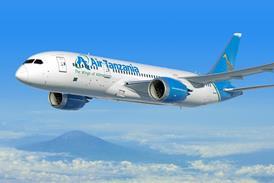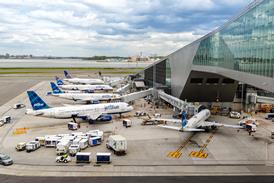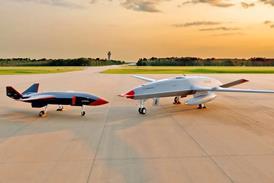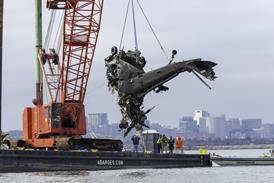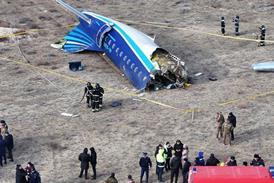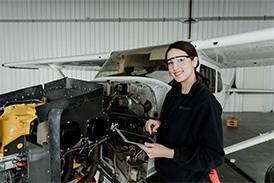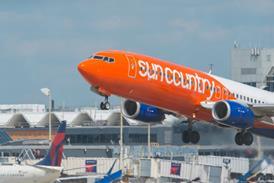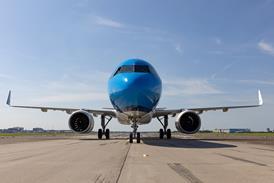A small Swiss company has achieved a surprising breakthrough in commercial aviation flight simulation – the world’s first regulatory-qualified mixed-reality (MR) flight simulator. Brunner Elektronik AG, based in the Zurich suburb of Hittnau, revealed on 4 June that its Novasim MR DA42 FNPT II (flight and navigation procedures trainer) has been authorised for training credits by the Swiss Federal Office of Civil Aviation (FOCA), based on European Union Aviation Safety Agency (EASA) standards.

Brunner has been working on the device for six years, and accelerated efforts in 2021 in response to a tender from Lufthansa Aviation Training (LAT), which will use the prototype in its ab initio flight training academy in Zurich.
A key difference of MR compared with virtual reality (VR) is that the device features a physically accurate Garmin 1000 NXi replica glass cockpit, complete with tactile switches and dials, as well as electronic flight bag (EFB) or maps, blended with synthetic out-the-window views of airports, lighting, terrain, traffic and weather. VR devices generally offer a computer-generated cockpit plus virtual representations of a pilot’s hands, arms and legs based on positional tracking sensors.
Brunner chief executive Roger Klingler says: “Mixed reality allows pilots to train entire flight sessions – from pre-flight checks and checklist execution to taxiing, takeoff, and landing - using natural, hands-on interaction with the real cockpit.”
Another small Swiss company, Loft Dynamics (originally VRM Switzerland), was the first to achieve regulatory approval of a VR-based flight training device for helicopters, in 2021 with EASA and last July with the US Federal Aviation Administration (FAA). In April Loft announced a partnership with Alaska Airlines to develop a VR-based fixed-wing simulator for Boeing 737 training.
Brunner’s forte to date in simulation has been provision of precision electronics for other suppliers’ training devices: control loading systems, small (30cm stroke) six-degree-of-freedom motion platforms, and instructor stations. For the Novasim MR DA42, Brunner is also the systems integrator.
The visual system uses FlightSafety International’s VITAL 1150 image generator, the same IG FSI uses in Level D full-flight simulators.
A critical enabler of the mixed-reality concept is Finnish company Varjo’s XR-4 Focal head-mounted display (HMD), which uses low-latency, 20 megapixel, front-mounted passthrough cameras to view the cockpit avionics, EFB and the pilot’s own body. An electronic mask carves out those areas to be filled in with computer imagery, such as the instructor seat, wings, engines and the outside world.
Sensors embedded in the Varjo Focal HMD track the combined gaze of the pilot’s eyes and auto-adjust the image resolution in the foveal area of vision, what Varjo calls “foveated rendering”.
“Wherever you’re looking in the cockpit, the different panels, it will focus on that and drive the visual fidelity towards that place,” says Mikko Luhtava, Varjo chief marketing officer. Wherever the pilot looks, he or she perceives a high-resolution display (3840 x 3744 at 51 pixels per degree). The headset offers a 120-degree by 105-degree field of view, a 50% increase from the XR-3 model, at a 90 Hz refresh rate.
Among the military programmes using th $9,990 Varjo Focal is the US Army Reconfigurable Virtual Collective Trainer (RVCT) Air for Boeing Apache and Chinook and Sikorsky Blackhawk helicopter training.

The Brunner instructor station offers training session recording for analysis and debrief, eye-tracking to monitor where the student is looking in real time, and a pointer tool to highlight any instrument or control input in the trainee’s view.
“Advanced features like eye-tracking provide instructors with objective insights into pilot performance. This enables early detection of issues such as missed instruments, poor situational awareness, or wrong scanning patterns – allowing instructors to intervene and correct behaviours early in the training process,” Klingler says.
Brunner is also developing a mixed-reality simulator for the Lockheed Martin F-35 fighter aircraft, which has been ordered by the Swiss Army and multiple other European militaries.
The Brunner FNPT II authorisation is under a 2024 special conditions information addendum to EASA document ARA.FSTD.100(c)(1) of Annex VI (Part-ARA) to Regulation (EU) No 1178/2011.
The Diamond DA42, which has sold well over 1,000 aircraft worldwide, is popular with flight schools. LAT has 14 DA42s in service or on order. Austria-based Diamond Aircraft is a subsidiary of Chinese company Wangfeng Aviation since 2017.

